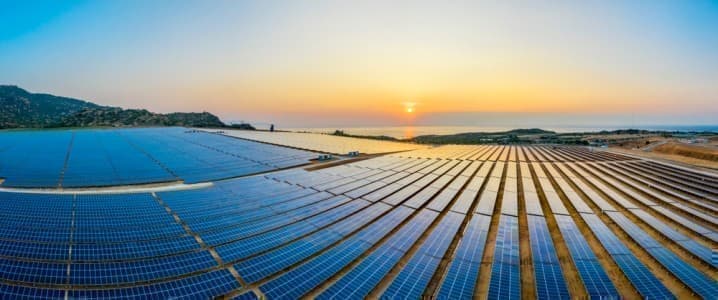U.S. solar capacity developers are delaying project timelines despite the longer-term visibility and tax credits the Inflation Reduction Act has provided to the industry. Supply chain constraints have worsened this year as power plant developers are struggling to get their hands on solar panels due to new U.S. legislation banning imports of products manufactured using forced labor in China. The outsized share of the market that Chinese polysilicon, solar wafers, solar cells, and solar panels hold globally has become clearly evident in the U.S. solar industry supply chain. American solar plant developers look to source panels outside China, but not all are successful, so many are pushing back project construction and commissioning timelines. The result is a slower rollout of installed solar capacity than planned earlier this year.
U.S. solar panel makers are swamped with requests and contracts from photovoltaic plant developers and are sold out of products for years to come. The U.S. solar panel manufacturing industry is growing, but it will be years until the solar PV supply chain will be able to shake off the high dependence on China and other Asian manufacturers, many of which are using China-made polysilicon for their products.
Supply Chain Challenges
U.S. President Joe Biden announced in June a two-year pause in import tariffs on solar panels manufactured in Southeast Asia in an attempt to kickstart the American solar industry supply chain. The tariff exemption for solar panels imported from Cambodia, Malaysia, Thailand, and Vietnam came after the Department of Commerce (DOC) opened an investigation earlier this year into whether U.S. imports of panels completed in those four Southeast Asian countries - using parts and components from China - are circumventing the antidumping duty and countervailing duty orders on solar cells and modules from China.
The tariff pause provided market optimism, but just a few weeks later, the U.S. enacted the Uyghur Forced Labor Prevention Act (UFLPA), which bans products manufactured using forced labor in China’s Xinjiang Uyghur Autonomous Region. The Xinjiang Uyghur Autonomous Region (XUAR) is home to half of the world’s polysilicon, which is used in solar panels manufactured in many other countries.
Under the Act, companies should provide a track record of the supply chain of solar panels and other equipment to ensure that they haven’t been manufactured using forced labor. And the customs and border headaches for the solar power industry began in earnest.
The U.S. Customs and Border Protection has seized more than 1,000 shipments of China-made solar power equipment in connection with the law, industry sources and customs officials told Reuters last month.
Many other shipments of solar panels haven’t left for the U.S. from other parts of Asia as exporters and importers in the U.S. are wary of the lengthy process of checking each and every detail of the supply chain of solar PV products.
The uncertainties and customs checks are likely to further delay imports of components for the solar manufacturing industry, at least in the short to medium term.
Solar Power Deployment Slows Down
The U.S. legislation has resulted in detentions of solar modules, exacerbating ongoing supply chain challenges, the Solar Energy Industries Association (SEIA) and Wood Mackenzie said in their quarterly review of the U.S. solar market in September. The U.S. Solar Market Insight Q3 2022 found that the UFLPA “could limit solar deployment through 2023 due to module availability constraints, delaying the near-term effectiveness of the IRA to 2024 and beyond.”
Wood Mackenzie expects the solar industry to remain supply-constrained through the end of 2023. As a result, the full benefits of the IRA won’t be felt until at least 2024, WoodMac and SEIA said.
Related: China Concerned Over Kazakhstan’s Ability To Deliver Contracted Gas Supplies
Early this year, power plant developers planned to install 17.8 gigawatts (GW) of utility-scale solar PV generating capacity in 2022, the EIA said in August. Over the first six months of 2022, only 4.2 GW of that capacity came online, less than half of what the industry had planned to install. From January through June 2022, about 20% of planned solar capacity was delayed.
“The friendly fire here is not helpful,” George Hershman, CEO at Solv Energy, the largest utility solar contractor in the U.S., told The Wall Street Journal, commenting on the delays.
“It’s been a tough year for supply chain. In some areas we’re moving in the right direction but in others we’re seeing negative impacts on our ability to create #solarjobs and deploy clean energy in the U.S.,” Hershman tweeted this week.
Solar installations dropped by 23% in the third quarter, the American Clean Power Association (ACP) said in a report last month. While solar dominates the clean energy project pipeline, it also accounts for the majority of delayed capacity at 63%, the report found.
ADVERTISEMENT
“Solar panel detentions are preventing projects from reaching completion and threaten to disrupt the pace of future installations,” the association said.
With delays at borders, project developers are flocking for solar panels to firms such as First Solar Inc, which is the only U.S.-headquartered firm among the world’s largest solar manufacturers. American plant developers are booking solar panels and other components years in advance.
“As of now, we are sold out for 2025 and close to selling out for 2026. Note, we anticipate having ’26 sold out by the end of the year as we have a number of contracts in late-stage negotiations,” First Solar’s CEO Mark Widmar said on the earnings call in October.
By Tsvetana Paraskova for Oilprice.com
More Top Reads From Oilprice.com:
- Turkey Looks To Capitalize On Russia’s Fading Influence In The Middle East
- Russian Upstream Oil And Gas Investment Set To Plunge By $15 Billion
- Blinken: Putin’s Brutalization Of Ukraine’s People Is Barbaric


















